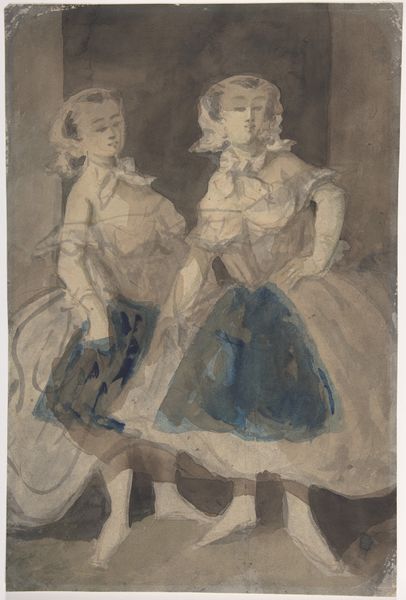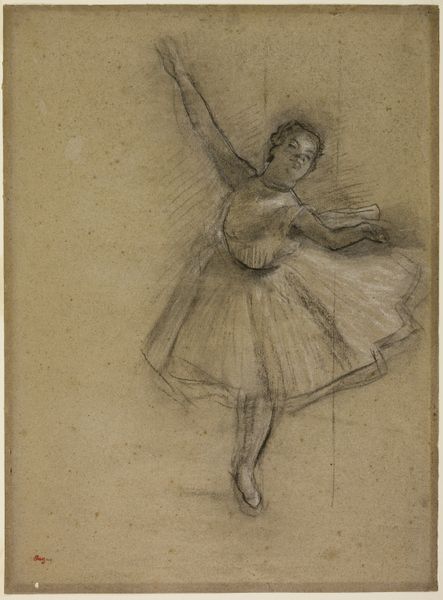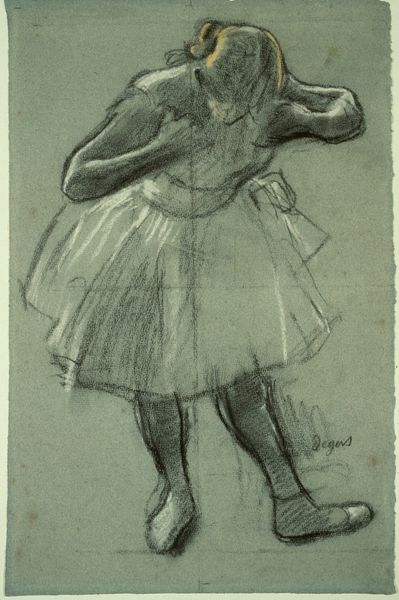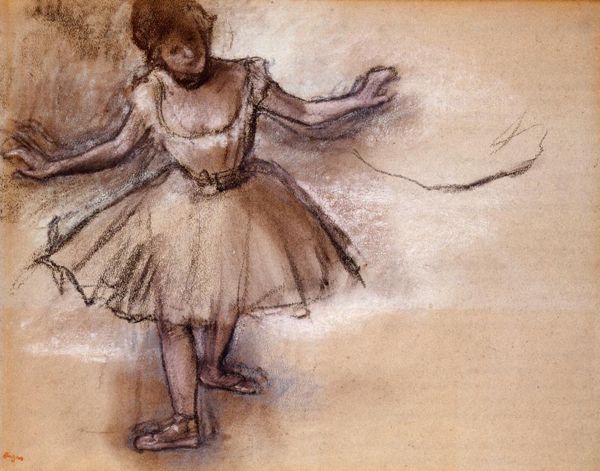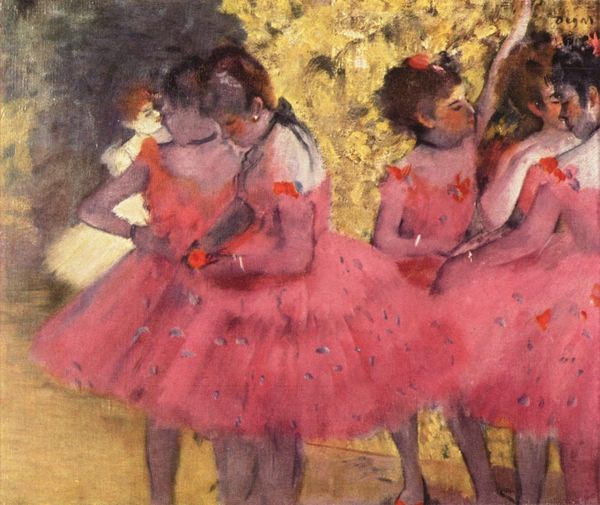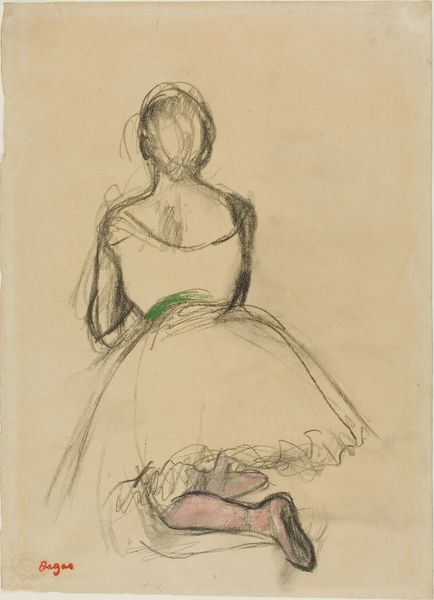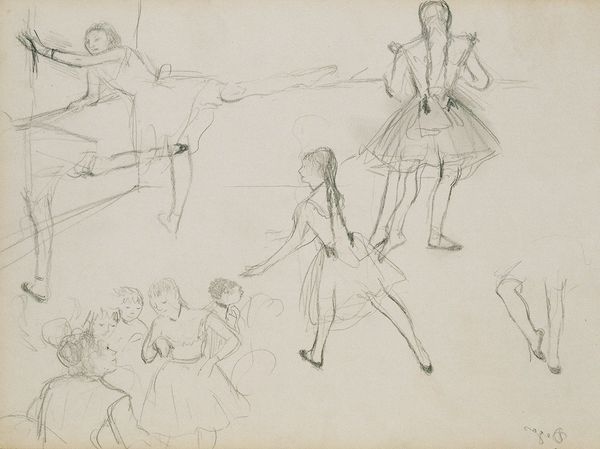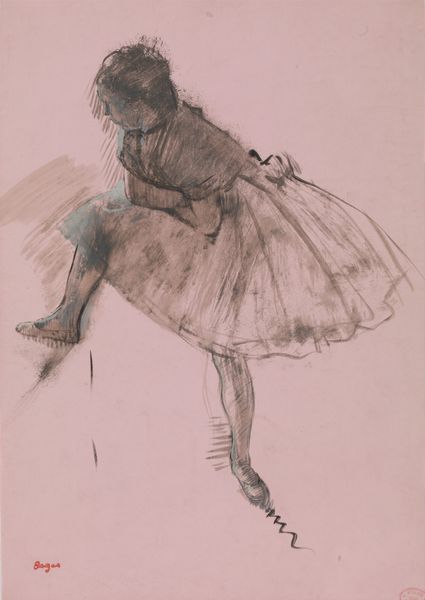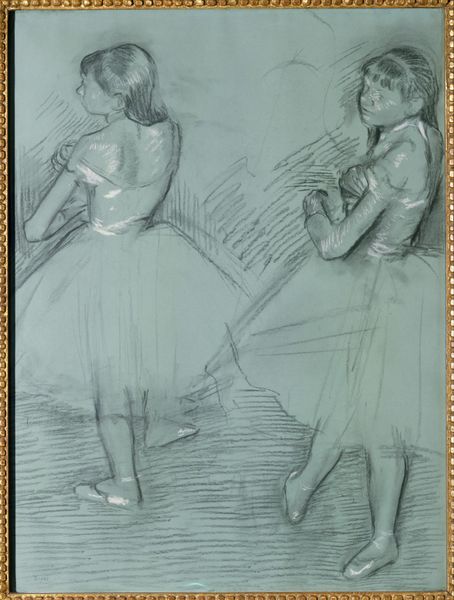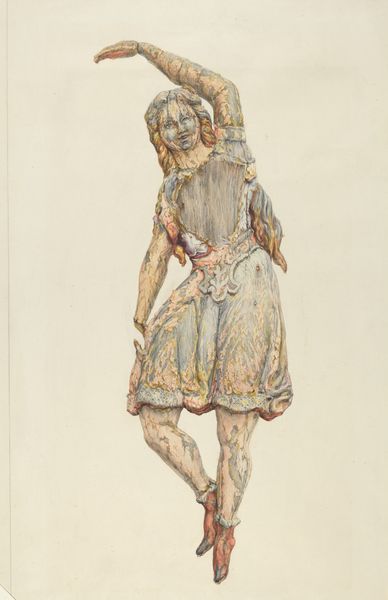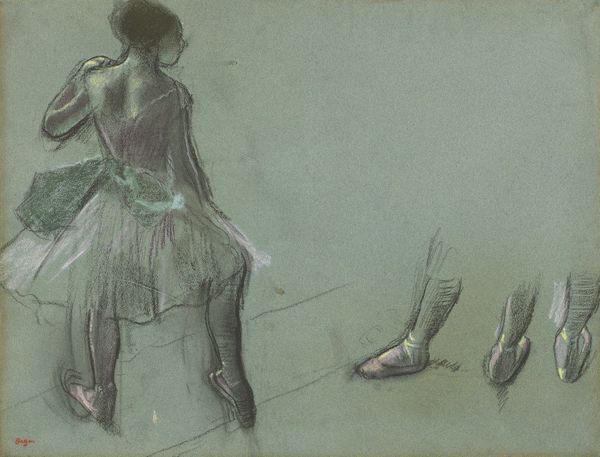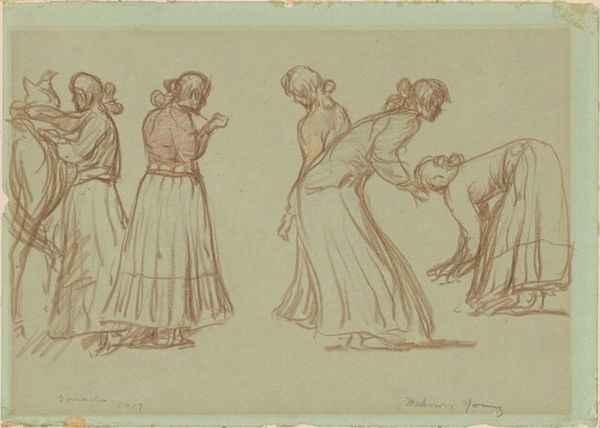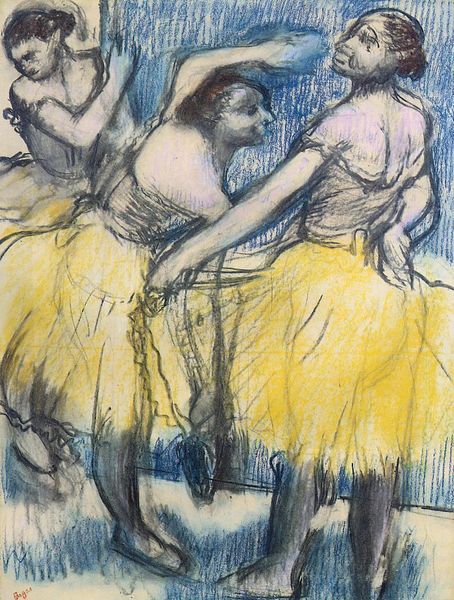
drawing, print, paper, pencil, charcoal
#
portrait
#
drawing
# print
#
impressionism
#
charcoal drawing
#
figuration
#
paper
#
coloured pencil
#
pencil
#
charcoal
Dimensions: 480 × 616 mm
Copyright: Public Domain
Curator: Edgar Degas’ "Three Studies of a Dancer in Fourth Position," created around 1879-1880, showcases his keen interest in the human form in motion, particularly within the world of ballet. He employs charcoal and colored pencil on paper to capture these fleeting moments. What's your immediate take? Editor: Immediately, I sense a poignant stillness despite the implied movement. They seem suspended, not quite grounded in their poses, and their expressions suggest a blend of concentration and perhaps, a touch of weariness. It speaks to the relentless dedication required of these dancers, trapped in a performance for wealthy audiences. Curator: I see what you mean, but my reading begins with Degas' brilliant manipulation of line and form. Notice how the starkness of the charcoal defines the silhouettes, contrasted with the softer pastel hues suggesting light filtering through the ethereal tutus. Editor: While that’s undeniable, the image triggers thoughts about labour, and exploitation. These were young girls from working-class backgrounds, weren’t they? Performing grueling routines. This portrayal captures them in a suspended moment between their hard life off stage, and being presented as elegant figures. Curator: True. Still, Degas uses repetition here, echoes, almost, of the same figure. The composition itself reflects his study of the body—an attempt to distill motion and expression to its essential forms and lines; three perspectives but one underlying form. The formal rigor is captivating. Editor: It is. But I cannot unsee their lack of agency, even within the image. He emphasizes not only the precision, but perhaps the precarity and stricture of their positions as dancers. Curator: Well, "precarity" may be read directly from the visible, economical draftsmanship, as Degas focuses less on their faces, which are secondary, and more on their posture and stance—a testament to their physical form. The coloured pencil helps with modeling volume in their bodies and in the billowing tulle. Editor: Degas manages to encapsulate layers of socio-economic reality here, of which a simple technical summary falls short, to me. This piece becomes a commentary on those pressures—seen as both bodies poised, and spirits waiting. Curator: An incisive and relevant perspective that highlights how this composition can become a poignant moment for different ideas to surface. Thanks. Editor: Yes, the technique brings emotion forward! An economical application that does not shield our empathy.
Comments
No comments
Be the first to comment and join the conversation on the ultimate creative platform.

